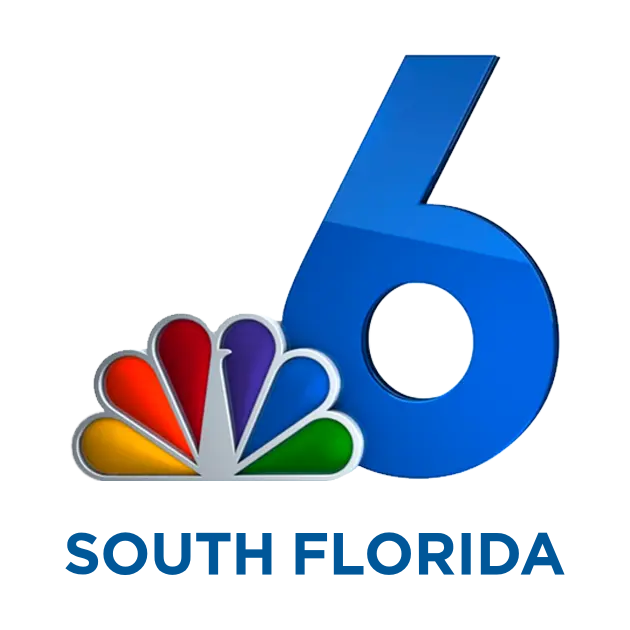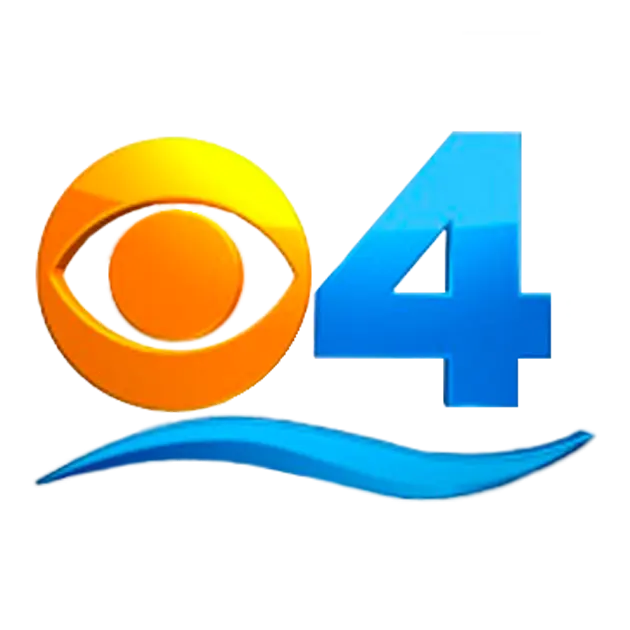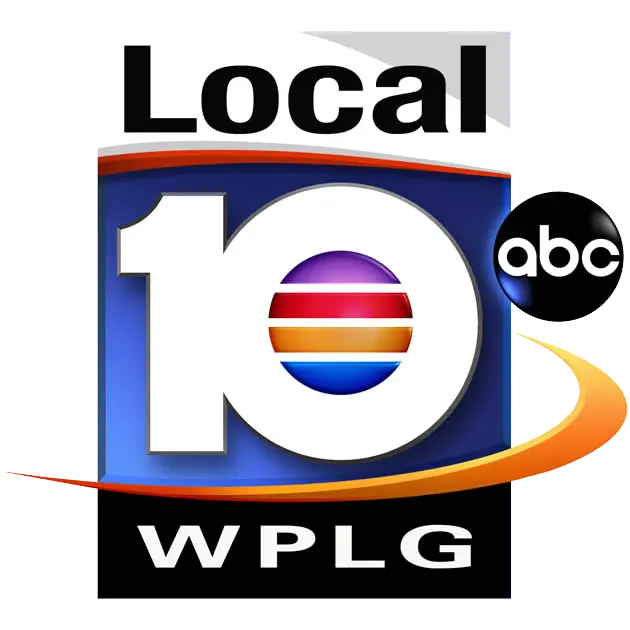















Let’s face it: theme parks are a blast! Heart-pounding rollercoasters, swirling teacups, and mouth-watering churros are perfect for a fun-filled day with family and friends.
But what happens if that day takes a turn for the worse?
While roller coasters, water slides, and carnival games offer excitement, they can also be sources of unexpected accidents.
The risk of getting hurt in a theme park accident is high. This is particularly true in Florida, considering the state has the highest instances of amusement park injuries in the country.
Some of the theme parks include Magic Kingdom, Epcot, Hollywood Studios, Animal Kingdom, Bush Gardens, Universal Studios Florida, Islands Of Adventure, and the new Universal Studio’s Epic Universe.
If you’ve been injured at a theme park, you might wonder, “Do I need a lawyer?” This is where our Florida theme park injury lawyers at Madalon Law step in. We understand how stressful it can be when you or a loved one suffers a theme park injury. We’re here to guide you as you file your claim and help you get your deserved compensation.
Schedule a Consultation with one of our theme park injury lawyers.
Theme parks are designed to offer fun, excitement, and entertainment for people of all ages. But when things go wrong, what was supposed to be a thrilling experience can quickly turn into a nightmare. Injuries at amusement parks happen for a variety of reasons. Understanding the common causes can help both visitors and operators reduce the risk of accidents.
Ride Malfunctions
Mechanical rides are the main attraction at theme parks, but they are also a leading cause of injuries. Ride malfunctions occur when there are problems with the ride’s mechanics, electronics, or safety systems. This can happen due to:
Poor maintenance: Rides that aren’t regularly inspected or maintained can develop issues over time.
Faulty design: Some rides may have design flaws that make them unsafe even when properly maintained.
Defective parts: Components of the ride may break or wear down, leading to accidents.
Ride malfunctions can result in serious injuries, particularly if safety features fail during operations. These can include broken bones, head trauma, or even death.
Operator Error
The people operating theme park rides play a critical role in ensuring safety. However, operator errors are a major cause of theme park injuries. These errors may include:
Improper use of safety equipment: Operators may fail to ensure that seat belts, harnesses, or restraints are properly secured before starting the ride.
Lack of attention: Some operators may be distracted or fail to follow safety protocols, which can lead to accidents.
Inadequate training: Poorly trained operators may not fully understand how to manage the ride safely, handle emergencies, or respond to malfunctions.
Even the smallest mistake by a ride operator can lead to significant harm.
Slip and Fall Accidents
Slip and fall accidents are one of the most common causes of injuries at theme parks. These accidents can happen for several reasons:
Wet surfaces: Water rides, pools, and rainy weather can create slippery walkways that lead to falls.
Uneven pavement: Cracks, holes, or uneven surfaces on walkways can cause visitors to trip and fall.
Inadequate lighting: Poorly lit areas can make it hard for people to see hazards, leading to accidents.
Loose debris: Items like trash, food, or spilled drinks left on the ground can make surfaces slippery.
These types of accidents often result in sprains, fractures, or head injuries and are often the result of poor park maintenance.
Passenger Misuse
While many theme park accidents are caused by mechanical failures or operator errors, a large number are also due to passenger misuse. Sometimes, visitors fail to follow safety guidelines, which can lead to injuries. Examples of passenger misuse include:
Ignoring safety instructions: Guests may not follow important safety directions, such as keeping their arms and legs inside the ride at all times.
Standing up on rides: Some thrill-seekers attempt to stand up or move around on rides designed for sitting, which can lead to falls or other accidents.
Improper use of restraints: Riders may loosen or tamper with seatbelts, harnesses, or other restraints, reducing their effectiveness and increasing the risk of injury.
Distracting the operator: Passengers who try to distract ride operators or ignore boarding procedures can disrupt the safety processes that keep everyone secure.
Horseplay: Engaging in roughhousing, pushing, or pulling other guests on rides or while waiting in line can easily lead to accidents.
Theme park rides are designed with strict safety rules for a reason, and even one person’s irresponsible behavior can affect everyone on the ride. Injuries from passenger misuse are preventable if everyone follows the posted rules and listens to operator instructions.
Lack of Proper Warnings
Theme parks are responsible for warning visitors about potential hazards. Failure to provide adequate warnings can lead to injuries. Examples include:
Failure to post height or health restrictions: Some rides are unsafe for young children, people with certain health conditions, or those under a certain height. If the park fails to post these warnings clearly, it can result in injuries.
No caution signs for wet floors: Areas around water rides or swimming pools may not have sufficient signage to alert guests of slippery conditions.
Unmarked hazards: If there are hazards like uneven ground or low-hanging objects, the park must clearly mark them to prevent accidents.
Without these warnings, visitors may unknowingly put themselves in danger.
Negligent Supervision
Many visitors to theme parks are children, and supervising them can be a challenge. Theme staff are responsible for ensuring that guests, especially children, are following safety rules. Negligent supervision occurs when:
Staff do not monitor guests properly: If employees are not paying attention, visitors may engage in unsafe behavior, such as standing up on a moving ride.
Overcrowding in certain areas: Parks that do not control crowd sizes may experience pushing, shoving, or trampling issues.
Failure to enforce rules: Some accidents occur when staff fail to enforce safety rules, such as keeping arms and legs inside the ride.
Negligent supervision can lead to preventable accidents, particularly for younger guests.
Falling Objects
Amusement parks are full of structures, decorations, and ride components that could potentially fall. Injuries from falling objects may occur due to:
Poorly secured items: Decorations, ride parts, or signage may become loose and fall on visitors.
Personal items: Guests may accidentally drop objects like phones or bags while on rides, which can injure people below.
Malfunctioning equipment: Parts of a ride may break off and hit someone walking nearby.
Falling objects can cause head trauma, lacerations, or other serious injuries if not properly managed.
Water Ride Hazards
Water rides and attractions at theme parks, like log flumes or water slides, are popular but can be dangerous. Common causes of water ride injuries include:
Drowning: If water safety measures are not followed or if lifeguards are not adequately trained, drowning accidents can occur.
Slip and falls: Wet surfaces around pools or slides can cause guests to slip and injure themselves.
Impact injuries: Riders can collide with each other or hit the sides of the ride, leading to bruises, broken bones, or head injuries.
Injuries at water parks often result from poor safety measures or lack of proper supervision.
Heat-Related Injuries:
During hot summer days, theme parks can become a dangerous environment for heat-related injuries. These can include:
Heatstroke: Prolonged exposure to the sun without adequate hydration or shade can cause heat exhaustion or heatstroke.
Dehydration: Many visitors fail to drink enough water, especially after spending hours in the sun.
Burn injuries: On particularly hot days, surfaces like metal railings or seating areas can become hot enough to cause burns.
Parks should provide water stations, shaded areas, and proper warnings about the risks of extreme heat to prevent these injuries.
Food Poisoning:
Food poisoning is another potential cause of injury at theme parks. Poor food handling, lack of cleanliness, or expired ingredients can lead to foodborne illnesses. Symptoms like nausea, vomiting, and stomach cramps can quickly turn a fun day at the park into an unpleasant experience.
Parks are responsible for ensuring that food is stored, prepared, and served safely. When they fail to do so, visitors may suffer from illnesses that could have been avoided.
Overcrowding:
Theme parks are often crowded, especially during peak seasons. Overcrowding can increase the risk of accidents, such as:
Trampling: Large crowds can lead to pushing and shoving, especially near entrances, exits, or popular attractions.
Increased likelihood of accidents: More people in one space can lead to collisions, falls, and other accidents.
Parks must take steps to manage crowd sizes and ensure the safety of visitors.
It’s true theme parks often have signs warning about potential hazards. However, just because a sign exists doesn’t mean the park is off the hook. Here’s why:
Florida is home to some of the most famous and thrilling theme parks in the world, including Walt Disney World, Universal Studios, and SeaWorld. With millions of visitors every year, the excitement is endless—but so are the potential risks.
Despite safety regulations, accidents still occur, leading to a variety of injuries. Below are some of the most common types of theme park injuries in Florida’s theme parks:
Whiplash and Neck Injuries
Rides like roller coasters, with sudden stops, sharp turns, and rapid accelerations, can cause whiplash. These motions jerk the neck violently, leading to muscle strain, sprains, and even damage to the vertebrae.
Common symptoms of whiplash and neck injuries include pain, stiffness, and reduced range of motion. These injuries can sometimes go unnoticed initially, only becoming more painful over time.
Broken Bones and Fractures
High-impact rides, falls, and accidents involving other visitors can result in broken bones or fractures. This can happen when a rider is ejected from a ride, slips on wet surfaces, or gets caught in malfunctioning ride mechanisms.
Broken arms, legs, ribs, and even collarbones are common, especially when people fall from heights or are involved in collisions.
Head and Traumatic Brain Injuries (TBI)
Head and traumatic brain injuries (TBI) are among the most serious types of theme park injuries. These types of injuries can occur in various ways, often stemming from the high speeds and unpredictable forces involved in rides.
Rider collisions, where guests accidentally hit their heads against parts of the ride due to improper restraint, are one of the more common causes.
Falling objects, such as loose items like phones or pieces of the ride itself, can also pose a significant risk when they drop from a height, striking someone on the head.
Additionally, slips and falls within the park, whether on wet surfaces or uneven terrain, may result in concussions or more severe TBIs.
Head injuries can have long-lasting effects, including memory loss, dizziness, headaches, and difficulty concentrating.
Lacerations and Cuts
Lacerations and cuts are common injuries at theme parks. They are caused by sharp objects or malfunctioning rides. Broken ride parts and sharp seating edges can lead to deep cuts. Guests may also be injured by debris or glass scattered around the park.
Some cuts may require stitches, while deeper wounds could cause nerve damage or infection if not treated promptly.
Bruises and Contusions
While bruises might seem minor, they are common at theme parks due to collisions, falls, and the force exerted by high-speed rides.
Bruises may appear after guests are jostled around in a ride or after bumping into hard objects. Although not life-threatening, these injuries can be painful and may indicate deeper damage beneath the skin.
Burns
Theme parks often involve heat or fire attractions, such as live shows, fireworks displays, or certain themed rides.
Burns can happen when guests touch overheated surfaces like ride seats, handrails, or platforms on a hot day. Additionally, water rides and flumes expose guests to heated water.
Another risk of burns is fire-related attractions, pyrotechnics malfunction, or failure to maintain a safe distance from the audience.
Burn injuries range from minor first-degree burns to more severe second- and third-degree burns that require medical treatment.
Drowning and Near-Drowning
Water rides, wave pools, and lazy rivers are extremely popular in Florida’s theme parks, but they also pose a risk of drowning. This is especially true for younger guests.
Drowning accidents occur when riders become trapped underwater due to faulty ride design or malfunction.
Another common cause of drowning is when guests are not properly supervised by lifeguards. There have also been instances when children ventured into deep waters without proper flotation devices.
Even if the victim survives, they can suffer brain damage due to lack of oxygen.
Motion Sickness
Motion sickness occurs when guests experience dizziness, nausea, and vomiting due to the rapid spinning, jerking, or sudden movements on certain rides. Rides that simulate high-speed motion or disorienting effects, like roller coasters or 3D simulators, are often the cause.
While motion sickness may seem minor, it can ruin a guest’s day and lead to other injuries. For example, guests may become disoriented and fall while exiting a ride or walking through the park.
Heat Exhaustion and Heatstroke
Florida’s hot and humid weather can lead to serious heat-related injuries, especially for park-goers who spend hours walking in the sun.
One of the most common heat-related issues is heat exhaustion. Signs of heat exhaustion include heavy sweating, weakness, dizziness, and nausea. If your body overheats, it can also lead to a life-threatening condition, heatstroke. This can lead to confusion, rapid heartbeat, and potential organ damage.
These injuries are preventable with proper hydration, sun protection, and regular breaks in shaded areas.
Soft Tissue Injuries
Soft tissue injuries affect the muscles, tendons, and ligaments, which are quite common in theme parks. These injuries are often caused by overexertion. Long days of walking, standing, and waiting in line can lead to sprains and strains.
Sudden movements can also result in soft tissue injuries. Rapid and sharp changes in direction during rides can lead to muscle tears, sprained ankles, or even torn ligaments.
Soft tissue injuries may require physical therapy and can cause pain and limited mobility for weeks or months.
Eye Injuries
Rides that involve high speeds can result in eye injuries if foreign objects like dust, debris, or insects enter the eyes. In addition, exposure to bright lights from fireworks or special effects can cause eye strain or more serious damage.
Injuries to the eyes may result in temporary or permanent vision loss if not treated quickly.
Injuries from Animal Encounters
Certain theme parks in Florida feature live animals as part of the attractions, like SeaWorld or Disney’s Animal Kingdom. Although these attractions are designed to be safe, injuries can occur due to animal bites or scratches.
Guest can also experience accidents during animal shows or encounters or have allergic reactions to animal dander or bites.
While such injuries are rare, they can be serious depending on the type of animal involved and the nature of the injury.
Food Poisoning
Food and drink vendors are a staple at theme parks, but poor food handling or improper storage can lead to foodborne illnesses. Symptoms of food poisoning include stomach cramps, vomiting, diarrhea, and fever.
Serious cases of food poisoning can lead to dehydration and even complications like kidney failure. Some people also die from severe food poisoning.
Psychological Trauma
In some cases, theme park injuries aren’t just physical. Guests who experience traumatic events, such as being trapped on a ride or witnessing a serious accident, can suffer from psychological trauma.
Anxiety, post-traumatic stress disorder (PTSD), and emotional distress can be lasting consequences of these events, requiring professional therapy or counseling.
If you or a loved one has been injured at a theme park in Florida, Madalon Law can help. Our experienced Florida personal injury attorneys specialize in theme park injuries and will fight to get you the compensation you deserve. Contact us today for a free consultation to discuss your case.
In Florida, several key laws govern the safety and regulation of theme and theme parks. If you’re considering filing a claim for an injury sustained at a theme park, you need to get a sound understanding of these laws.
Premises Liability Law
Florida’s premises liability laws are designed to ensure that property owners maintain safe environments for visitors. This legal principle is especially relevant in theme parks, where safety is paramount due to the high volume of guests and the complex nature of attractions.
According to these laws, theme park owners are responsible for maintaining all areas of their property, including restaurants, shops, restrooms, and attractions.
Property owners must regularly inspect their premises for hazards and promptly address any issues that could pose a risk to visitors. This includes ensuring that walkways are free of obstacles, surfaces are in good repair, and safety protocols are in place.
If a theme park fails to address known hazards, such as slippery floors, broken railings, or malfunctioning equipment, it could be deemed negligent. In such cases, the park may be liable for any injuries that occur as a result of these unsafe conditions.
For example, if a visitor slips and falls due to a wet floor that the park failed to clean or properly mark, the park could be held responsible for the injury. This legal framework helps ensure that visitors can enjoy the attractions without the risk of preventable accidents.
Product Liability Laws
Product liability laws play a key role in holding manufacturers and park owners accountable for injuries resulting from defective ride equipment or park facilities. These laws apply when a design flaw, manufacturing defect, or inadequate warning leads to harm.
For instance, if a roller coaster has a poorly designed restraint system that fails during operation, causing injury to a rider, both the manufacturer of the ride and the theme park could be held liable.
The scope of product liability extends beyond the immediate operators of the rides. Manufacturers are responsible for ensuring that their products are free from defects and meet safety standards before they are installed at theme parks.
If a defect in design or manufacturing causes an injury, the injured party can pursue a claim against the manufacturer. Similarly, the park owner has a duty to ensure that all equipment is properly maintained and operated according to safety guidelines.
If the park fails to address known issues with the equipment or ignores safety warnings from the manufacturer, it can also be held liable.
These laws ensure that both manufacturers and park operators take proactive measures to ensure the safety of their attractions. When defects or maintenance failures lead to injuries, these laws provide a pathway for victims to seek compensation for their damages and hold responsible parties accountable.
Modified Comparative Negligence
Florida follows a modified comparative negligence rule. This impacts how damages are awarded if the injured party is found to be partially at fault.
Under this rule, if an injury victim is partially responsible for the accident, their compensation can be reduced proportionately. For example, if a person is found to be 30% at fault for a slip and fall accident, the damages awarded to them will be reduced by 20%.
However, Florida also has a 51% threshold: if a victim is found to be more than 50% at fault, they cannot recover damages. This rule can affect cases where a visitor’s own actions, such as ignoring warning signs, contribute to their injury.
The Tyre Sampson Act
The Tyre Sampson Act, enacted in 2022, is a significant piece of legislation in Florida that aims to improve safety standards at theme parks. It was named after Tyre Sampson, a 14-year-old boy who tragically lost his life on a drop tower ride at ICON Park, Orlando.
Key provisions in the Tyre Sampson Act include:
These laws can help you assess liability and pursue legal action if you’ve been injured at a Florida theme park. It’s important to consult with a qualified Florida theme park injury attorney to understand these legal considerations effectively.
In an theme park injury lawsuit, the defense may use several strategies to contest your claim. Understanding these defenses can help you prepare and strengthen your case:
Comparative Negligence: The defense may argue that you were partially or wholly responsible for the accident. They might claim that your own actions contributed to your injuries. For example, if you ignored safety instructions, the defense could argue that you share blame for the incident.
Assumption of Risk: The defense may assert that you assumed the risk of injury by participating in the ride or attraction. They might argue that you were aware of the inherent risks and chose to accept them. This defense is often used in cases where the risks are clearly communicated, such as on warning signs.
Contributory Negligence: In some cases, the defense may argue that your negligence was the sole cause of the injury. They might claim that the accident was entirely due to your actions or inactions, not any fault of the park.
Pre-Existing Conditions: The defense may argue that your injuries were pre-existing or unrelated to the accident. They might present medical records to show that your injuries were caused by a condition you had before the incident.
Maintenance and Inspection Records: The defense may present evidence showing that the theme park properly maintained and inspected the ride or attraction. They might use maintenance logs, inspection reports, and other documentation to argue that they fulfilled their safety obligations.
Contributory Fault of Third Parties: The defense might claim that other parties, such as other guests or external factors, contributed to the accident. They could argue that the theme park was not solely responsible for the incident.
Compliance with Safety Regulations: The defense may argue that the theme park complied with all relevant safety regulations and standards. They might present evidence that the park followed industry guidelines and legal requirements for ride safety and maintenance.
By being aware of these defenses, you can work with your theme park injury lawyer to address them effectively and strengthen your claim.
What You Should Do to Create a Strong Theme Park Injury Claim
To build a strong theme park injury claim, it’s critical to gather and present compelling evidence. Here’s how you can strengthen your case:
By following these steps, you can protect your health, gather essential information for your case, and ensure that your rights are upheld. Taking prompt action after an accident can greatly impact the outcome of any legal proceedings and help you on the road to recovery.
What compensation can I seek in a theme park injury claim?
If you’ve been injured at a theme park, you may be eligible for several types of compensation:
A theme park injury lawyer can help you determine the full extent of compensation you may be entitled to based on your case.
How long do I have to file a claim for a theme park injury?
The statute of limitations for personal injury claims in Florida is typically four years from the date of the accident. However, it is crucial to consult with a lawyer as soon as possible to ensure timely filing.
What if I’m injured on a ride that I’m not supposed to be on?
You may still have a case. Even if you were violating park rules by riding a ride you weren’t supposed to, the park may still be liable for your injuries if they failed to take reasonable steps to prevent accidents.
Can I sue a theme park if I get injured in a parking lot?
Yes, you can. Theme parks have a duty to maintain safe parking lots for their visitors. If you are injured due to a dangerous condition in the parking lot, you may be able to sue the park.
What if I’m injured by another visitor?
The theme park may still be liable. Theme parks have a duty to provide a safe environment for their visitors, and this includes protecting them from injuries caused by other visitors.
What if I’m injured at a water park?
The same rules apply. Water parks are subject to the same safety regulations as other theme parks. If you are injured at a water park, you may have grounds for a personal injury lawsuit.
What is a contingency fee, and how does it work with theme park injury lawyers?
A contingency fee means you pay your lawyer only if you win your case. The lawyer’s fee is typically a percentage of the settlement or judgment awarded. This arrangement allows you to pursue legal action without upfront costs.
How does a theme park’s waiver or release of liability affect my injury claim?
Waivers or releases of liability may limit your ability to sue for injuries, but they do not necessarily protect theme parks from all claims. Such documents are often unenforceable if they involve gross negligence or violations of safety regulations.
A Florida theme park injury attorney can review any waiver you signed and advise you on how it impacts your case.
What if the injury caused psychological trauma rather than physical harm?
Psychological trauma, such as anxiety, depression, or post-traumatic stress disorder (PTSD), can also be grounds for a claim. Courts recognize emotional distress as a valid form of damage, and a lawyer can help you present evidence of how the trauma has affected your life and well-being.
How does the theme park’s response to my injury impact my claim?
The theme park’s response, including their investigation and any statements they make, can impact your claim. A prompt and transparent response might show a willingness to address safety issues, while a dismissive or evasive response could suggest negligence.
Your Florida personal injury lawyer will consider these factors when building your case and negotiating for compensation.
What are some common misconceptions about filing a claim for a theme park injury?
Common misconceptions include the belief that you can’t win a claim without severe injuries or that theme parks are always protected by legal loopholes.
In reality, theme parks have a responsibility to maintain safety standards, and even minor injuries can warrant compensation if negligence is involved. A Florida accident attorney can help clarify these misconceptions and guide you through the process.
If you need further assistance or have additional questions, feel free to reach out to our law firm for a personalized consultation.
If you’ve been injured at a theme park, having a specialized lawyer on your side can make a big difference in your case. Here’s how a park accident lawyer can assist you:
Legal Advice: A theme park injury attorney offers expert guidance on your legal rights and the best course of action based on your specific situation. They will help you gain an in-depth understanding of theme park laws and how it applies to your case.
Investigation and Evidence Gathering: Your lawyer will conduct a thorough investigation of the accident. This includes gathering evidence such as accident reports, witness statements, and photographs of the scene and any damages. They will also review maintenance records and safety compliance documents to build a strong case.
Determining Liability: Identifying the responsible parties is key for a successful claim. A lawyer will analyze the facts of the case, including the actions of park staff, ride manufacturers, and other involved parties, to determine who should be held liable for your injuries.
Handling Insurance Claims: Dealing with insurance companies can be complex. Your lawyer will handle negotiations with the insurance company, ensuring you receive fair compensation for your injuries. These can include the cost of medical expenses, lost wages, and pain and suffering. They will advocate on your behalf to secure a settlement that reflects the full extent of your damages.
Handling Legal Proceedings: If your case goes to trial, a lawyer will represent you throughout the legal process. They will prepare and file all necessary legal documents, present evidence, and argue your case effectively before a judge or jury.
Ensuring Fair Compensation: Your lawyer will work to ensure you receive comprehensive compensation for all damages. This includes current and future medical expenses, lost wages, and compensation for pain and suffering. They will advocate for a settlement that addresses both immediate and long-term needs.
Handling Deadlines and Legal Procedures: Personal injury claims have strict deadlines. A lawyer will ensure that all necessary paperwork is filed on time and that you meet all legal deadlines, preventing your case from being dismissed due to procedural errors.
Appeals and Post-Trial Actions: If necessary, your lawyer can assist with post-trial actions, including filing appeals if the verdict is not favorable. They will explore all legal options to ensure that your rights are upheld and that you receive the justice you deserve.
If you’ve been injured, it’s essential to have a knowledgeable Florida theme park injury lawyer by your side. At Madalon Law, we are experienced in the practice area of theme park injury cases and are committed to securing you fair compensation. Our legal team will guide you through every step of the legal process with expertise and dedication.
Contact Madalon Law today to discuss your case and explore your options. Call us for a free consultation.